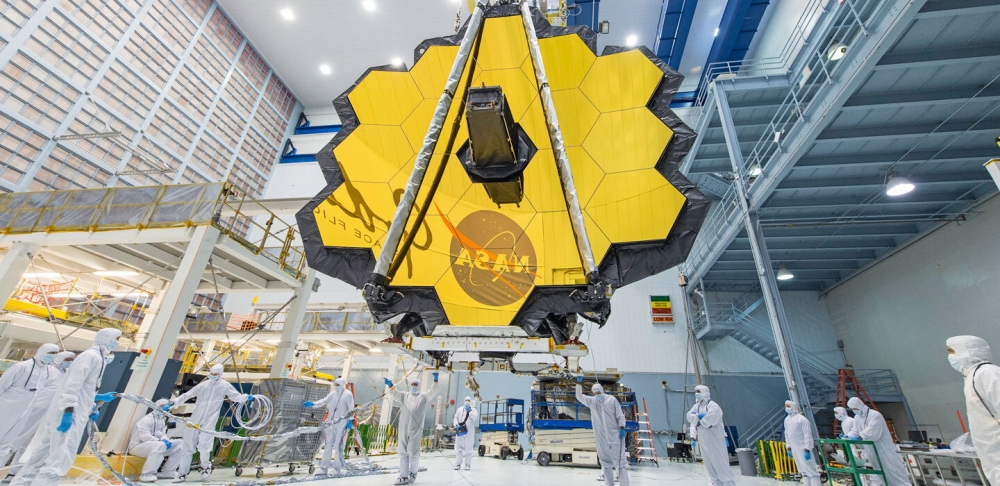When James Webb launches, it will have a bigger to-do list than 1980s researchers suspected

Engineers work on the James Webb Space Telescope’s primary mirror. The 18 hexagonal mirror segments are made of lightweight yet tough beryllium and coated with a thin layer of gold to boost reflectivity. DESIREE STOVER/NASA
Lisa Grossman
OCTOBER 6, 2021
Delays for the space telescope mean there’ll be more cool science to do
The James Webb Space Telescope has been a long time coming. When it launches later this year, the observatory will be the largest and most complex telescope ever sent into orbit. Scientists have been drafting and redrafting their dreams and plans for this unique tool since 1989.
The mission was originally scheduled to launch between 2007 and 2011, but a series of budget and technical issues pushed its start date back more than a decade. Remarkably, the core design of the telescope hasn’t changed much. But the science that it can dig into has. In the years of waiting for Webb to be ready, big scientific questions have emerged. When Webb was an early glimmer in astronomers’ eyes, cosmological revolutions like the discoveries of dark energy and planets orbiting stars outside our solar system hadn’t yet happened.
“It’s been over 25 years,” says cosmologist Wendy Freedman of the University of Chicago. “But I think it was really worth the wait.”
An audacious plan
Webb has a distinctive design. Most space telescopes house a single lens or mirror within a tube that blocks sunlight from swamping the dim lights of the cosmos. But Webb’s massive 6.5-meter-wide mirror and its scientific instruments are exposed to the vacuum of space. A multilayered shield the size of a tennis court will block light from the sun, Earth and moon.
For the awkward shape to fit on a rocket, Webb will launch folded up, then unfurl itself in space (see below, What could go wrong?).
See full text